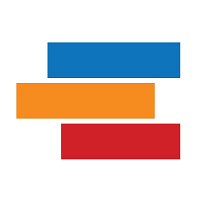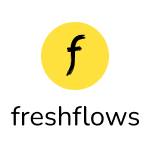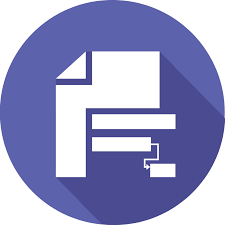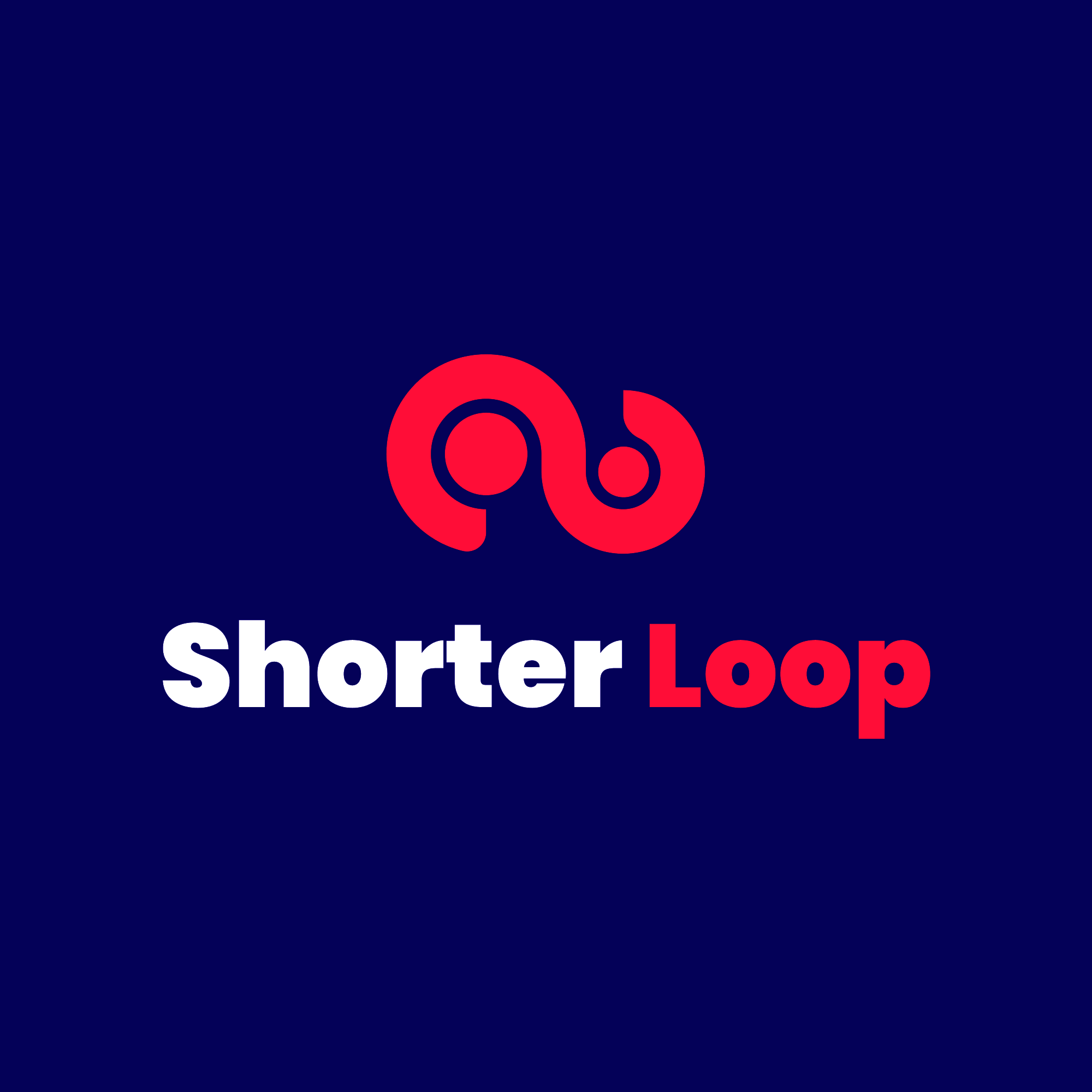Yes, most product roadmap software supports access from numerous devices and platforms. This implies that consumers may access and edit their product roadmap from a variety of devices, including PCs, laptops, tablets, and smartphones, as well as operating systems including Windows, Mac, iOS, and Android. This improves cooperation and accessibility by keeping team members informed and active in the roadmap's progress regardless of their device or platform preferences.
List of Best Product Roadmap Software
ProductPlan is solution that gives you full control over your product. It helps you streamline your teams workflow and improve efficiency by creating and communicating your product roadmap. With a range of features, ProductPlan allows for smooth visu...Read More ProductPlan
productboard - a product management platform that simplifies the process of identifying user needs, prioritizing features, and mapping out a clear product roadmap for your team. With user-friendly tools for idea generation and strategic decision maki...Read More productboard
Toggl is a Online Time Tracking solution for your business. With its fast and user-friendly time tracker tool, Toggl simplifies the process of tracking production information and streamlines the editorial management process. Enjoy a more efficient wo...Read More Toggl
Freshflows solution for product managers. With arsenal of features such as roadmaps, user personas, and feedback management, Freshflows empowers you to effortlessly prioritize and develop your products. Say goodbye to the complexities of product mana...Read More Freshflows
Gantt Chart Planner, the premier solution for creating dynamic Gantt charts directly on Confluence. With powerful functionalities comparable to Microsoft Project, easily manage and track your projects development all in one convenient platform. With...Read More Gantt Chart Planner
Roadmunk is a roadmapping platform designed to help product teams collect customer input, prioritize ideas, and effectively communicate their strategy. With seamless integration with popular tools like Jira and Azure DevOps, Roadmunk ensures data syn...Read More Roadmunk
ITONICS Roadmap is a tool for visualizing and planning strategic initiatives. Align projects seamlessly, track progress, and easily adapt to changes in your innovation journey. Transform ideas into actionable plans for efficient and goal-driven execu...Read More ITONICS Roadmap
Hutwork is a groundbreaking software revolutionizing the industry with its advanced capabilities. By maximizing efficiency and setting new benchmarks for performance and productivity, Hutwork is reshaping traditional processes. Embrace the future of...Read More Hutwork
OpenProject is a open source project management software that provides robust tools for task creation, project delivery, and scope management. Its user-friendly interface allows for effortless access to essential project details and updates, facilita...Read More OpenProject
Shorter Loop is a platform for product management. With Shorter Loop, you can effortlessly discover the best solutions and generate practical strategies to delight your clients. This results in improved customer satisfaction and higher willingness to...Read More Shorter Loop
Productific - the premier SaaS platform for product owners seeking to streamline their roadmap voting and user feedback system. Our goal is to equip product owners with informative insights to facilitate informed decision-making for product enhanceme...Read More Productific
Productroad is a tool for curating and managing customer feedback for your product roadmap. Our powerful platform enables you to effortlessly engage with your clients through tailored email notifications and a fully customizable changelog. Say farewe...Read More Productroad
Learn More About Product Roadmap Software
- What Is Product Roadmap Software?
- What Are the Recent Trends In Product Roadmap Software?
- Benefits Of Using Product Roadmap Software
- Important Factors To Consider While Purchasing Product Roadmap Software?
- What Are The Key Features To Look For In Product Roadmap Software?
- Why Do Businesses Need Product Roadmap Software?
- How Much Time Is Required To Implement Product Roadmap Software?
- What Is The Level Of Customization Available In Product Roadmap Software?
- Which Industries Can Benefit The Most From Product Roadmap Software?
- Conclusion
What Is Product Roadmap Software?
Product roadmap software is a powerful tool that allows businesses and teams to plan, visualize, and explain their products' future direction and goals. It serves as a roadmap, defining the major milestones and features that will be created and released over a set period of time. This provides product managers, marketers, and other team members with a comprehensive perspective of the product's development and alignment with the entire business plan.
One of the primary advantages of adopting product roadmap software is its ability to concentrate all information about a product's development and release. This implies that team members may see the roadmap at any time and from any location, ensuring a thorough awareness of the product's roadmap and timeframe. This eliminates the need for back-and-forth email exchanges and in-person meetings, saving time and effort.
Furthermore, product roadmap software helps teams coordinate and prioritize activities effectively. This is because the software enables seamless communication and feedback, ensuring that everyone is on the same page and the product is advancing as planned. Team members can collaborate to achieve a common goal in a clear and organized manner by assigning tasks, setting deadlines, and tracking progress.
Furthermore, product roadmap software provides a visual depiction of the product's roadmap, making it easier to grasp and discuss complex data. This is especially useful for stakeholders and team members who may be unfamiliar with technical specifics. The visual roadmap also enables for quick and easy modifications, which ensures that the roadmap is always relevant and up to date.
When investing in product roadmap software, it is critical to evaluate features such as customization choices, integrations with other tools and platforms, and project management abilities. Some software also includes additional capabilities like as multiple roadmap views, version control, and analytics, which are extremely useful for big and complex product development teams.
What Are the Recent Trends In Product Roadmap Software?
Product roadmap software enables product managers to plan, visualize, and explain their product strategy to stakeholders. In recent years, there has been a substantial growth in demand for product roadmap software, as organizations recognize the value of a well-defined product roadmap in driving business success. As a result, the market for product roadmap software has become increasingly competitive, resulting in the creation of new trends and features.
In this section, we will go over current trends in product roadmap software that purchasers should keep in mind while evaluating different solutions.
1. Collaboration Features: Successful product roadmaps require effective communication and collaboration. As a result, more and more product roadmap software provides advanced collaboration features such as real-time updates, commenting and tagging, project mentions, and notifications. This enables team members to communicate smoothly while remaining aware of changes and updates, encouraging transparency and accountability.
2. Integration With Project Management Solutions: In recent years, there has been a growing trend of combining product roadmap software with project management solutions. This interface enables a bidirectional flow of information, ensuring that the product roadmap coincides with project schedules, activities, and resources. It also assists in measuring progress, detecting bottlenecks, and making required changes to the roadmap.
3. Customization Capabilities: Each firm has its own set of goals, strategies, and processes that may necessitate a customized product roadmap. Recognizing this, product roadmap software suppliers are including highly customizable capabilities that enable users to design roadmaps tailored to their individual requirements. These applications now offer a variety of customization options, including the ability to select multiple templates, color schemes, and layouts, as well as add custom fields and labels.
4. Data Analytics And Visualization: Data is essential in product development, and the capacity to analyze and visualize it is becoming increasingly critical. Product roadmap software now includes built-in analytics capabilities that provide useful insights into market trends, customer behavior, and product performance. Users can also develop visual data representations, such as charts and graphs, to help stakeholders comprehend and communicate information better.
5. Mobile Accessibility: With the advent of remote work and the requirement for on-the-go accessibility, several product roadmap software vendors now provide mobile applications for iOS and Android smartphones. This enables product managers and their teams to access and update roadmaps from any location, at any time, promoting cooperation and productivity.
Benefits Of Using Product Roadmap Software
Product roadmap software is an invaluable resource for businesses seeking to organize and visualize their product development journey. This program enables enterprises to define their product strategy, prioritize features, and convey their road map to stakeholders.
Here are the main advantages of adopting product roadmap software for your organization:
1. Improves Communication And Collaboration: Product roadmap software enables you to discuss your product plans with all important stakeholders, including as team members, investors, and clients. This enhances communication, keeps everyone on the same page, and allows for participation on product creation.
2. Streamlines Product Planning: Product roadmap software offers a consolidated platform for organizing and managing all product-related data. It enables you to divide your product strategy into smaller, more manageable goals, create deadlines, and allocate tasks to team members, making product planning more efficient and successful.
3. Assists In Prioritizing Products: One of the most significant advantages of adopting product roadmap software is its ability to prioritize products based on their relevance and impact. This allows organizations to focus on developing the most significant features while avoiding spending time and money on less important ones.
4. Enables Flexibility And Adaptability: In today's fast-paced corporate environment, products and market demands are always changing. Product roadmap software enables firms to alter their product strategy in response to market developments or client needs. It also provides flexibility in modifying timelines and priorities as needed.
5. Improves Decision-Making: Product roadmap software provides a clear picture of your product's strategy, timeframes, and status. This enables decision-makers to make educated decisions and alter plans accordingly. It also enables data-driven decision-making by tracking and analyzing the performance of your plan.
6. Promotes Transparency And Accountability: A well-defined product roadmap produced using software encourages transparency inside the organization. It lets all team members to see the big picture and understand their contribution in attaining the product's objectives. It also holds everyone accountable to their assignments and deadlines.
Important Factors To Consider While Purchasing Product Roadmap Software?
When it comes to choosing product roadmap software, several critical elements should be considered to guarantee that you get the best tool for your needs.
Here are some crucial elements to consider before making this decision.
1. Company Goals And Needs: Before acquiring any product, it is critical to evaluate your company's objectives and requirements. This will assist you grasp the exact features and functionalities required for your organization. Create a list of your present pain spots and intended results to help guide your decision-making.
2. Ease Of Use: You don't want to invest in a product that is difficult to use and requires substantial training for your team. Look for a system with an easy-to-use interface and minimal onboarding. This not only saves time and costs, but also ensures that your team's transfer to the new program goes well.
3. Customization Options: Each organization has its own distinct procedures, and your product roadmap software should be able to adapt to them. Look for a system with customizable possibilities to meet your individual requirements. This will boost efficiency and overall success in your product roadmap planning.
4. Integration Capabilities: Because your product roadmap software will be utilized with other tools and systems, it must have integration capabilities. This allows you to integrate your roadmap with your project management, collaboration, and analytics applications, among others, for a more smooth workflow.
5. Scalability: Your product roadmap software should not only match your current requirements, but also allow for future expansion. Look for a scalable system that can expand with your business. This will save you the headache of switching software as your firm grows.
6. Pricing: Product roadmap software can cost anywhere from free to hundreds of dollars. While it may be tempting to choose a free or low-cost solution, it is critical to weigh the long-term value and ROI before making a selection. Analyze your budget and select a solution that provides the features you require at a fair cost.
7. Customer Help: If you have any problems or have queries regarding the product, it is critical to have reliable customer help. Look for a vendor who provides responsive and helpful customer support. You can also read reviews and request referrals from other businesses to determine the degree of help provided.
By taking these variables into account, you can make an informed decision about which product roadmap software is most suited to your company's requirements. Remember to compare choices and take advantage of free trials to see which solution is ideal for your team before making a final purchase.
What Are The Key Features To Look For In Product Roadmap Software?
When it comes to choosing product roadmap software, several critical elements should be considered to guarantee that you get the best tool for your needs.
Here are some crucial elements to consider before making this decision.
1. Company Goals And Needs: Before acquiring any product, it is critical to evaluate your company's objectives and requirements. This will assist you grasp the exact features and functionalities required for your organization. Create a list of your present pain spots and intended results to help guide your decision-making.
2. Ease Of Use: You don't want to invest in a product that is difficult to use and requires substantial training for your team. Look for a system with an easy-to-use interface and minimal onboarding. This not only saves time and costs, but also ensures that your team's transfer to the new program goes well.
3. Customization Options: Each organization has its own distinct procedures, and your product roadmap software should be able to adapt to them. Look for a system with customizable possibilities to meet your individual requirements. This will boost efficiency and overall success in your product roadmap planning.
4. Integration Capabilities: Because your product roadmap software will be utilized with other tools and systems, it must have integration capabilities. This allows you to integrate your roadmap with your project management, collaboration, and analytics applications, among others, for a more smooth workflow.
5. Scalability: Your product roadmap software should not only match your current requirements, but also allow for future expansion. Look for a scalable system that can expand with your business. This will save you the headache of switching software as your firm grows.
6. Pricing: Product roadmap software can cost anywhere from free to hundreds of dollars. While it may be tempting to choose a free or low-cost solution, it is critical to weigh the long-term value and ROI before making a selection. Analyze your budget and select a solution that provides the features you require at a fair cost.
7. Customer Help: If you have any problems or have queries regarding the product, it is critical to have reliable customer help. Look for a vendor who provides responsive and helpful customer support. You can also read reviews and request referrals from other businesses to determine the degree of help provided.
By taking these variables into account, you can make an informed decision about which product roadmap software is most suited to your company's requirements. Remember to compare choices and take advantage of free trials to see which solution is ideal for your team before making a final purchase.
Why Do Businesses Need Product Roadmap Software?
Businesses use product roadmap software because it gives a clear, organized, and strategic plan for developing and launching products. This tool acts as a product development roadmap, defining the activities and timescales required to successfully launch a product. First and foremost, product roadmap software assists firms in staying focused and aligned with their long-term goals and objectives.
Visualizing the product roadmap allows teams to see the broad picture and understand how their individual effort contributes to the overarching product goal. This alignment guarantees that resources are not squandered on concepts or products that do not fit into the company's goal. Second, product roadmap software helps firms prioritize projects and allocate resources more effectively.
With a thorough timeline and a clear understanding of project dependencies, teams can organize their work more efficiently, minimizing delays and budget overruns. This level of organization and planning is essential in a fast-paced business environment where time and resources are few. Third, having a roadmap allows organizations to explain their product development strategy to stakeholders such as investors, customers, and internal teams.
This transparency fosters confidence and keeps everyone on the same page, lowering the likelihood of misinterpretation and misunderstanding. Furthermore, product roadmap software enables organizations to remain competitive by responding to market trends and consumer wants. With the capacity to examine the market and competitors, teams can make informed decisions about product features and additions, ensuring their product remains relevant and fits the needs of their target market.
Finally, product roadmap software acts as a centralized repository for all product-related information and updates. This guarantees that everyone has access to the most recent and accurate information, reducing the possibility of errors and out-of-date plans.
How Much Time Is Required To Implement Product Roadmap Software?
The time required to develop product roadmap software varies depending on a number of factors. These considerations include the complexity of your product development process, the size of your business, and the exact features and functionalities you require from a product roadmap tool. On average, the installation phase can last anywhere from a few weeks to a few months. This includes the time required for initial setup, customisation, and training of team members.
The following are the important processes involved in adopting product roadmap software, which can help you understand the time required:
1. Assessing Your Organization's Needs: Before you start the implementation process, you should examine your organization's needs and identify the exact features and functionalities you want in a product roadmap tool. This step can take a few days because it includes gathering feedback from all stakeholders and identifying the bottlenecks in your current product development process.
2. Choosing The Correct Software: Once you've determined your organization's requirements, the following step is to investigate and analyze several product roadmap tools to identify the best fit for your company. This may include demo sessions, free trials, and vendor consultations. Depending on how comprehensive your review is, this phase could take a week or two.
3. Setting Up The Program: Once you've chosen the software, the vendor will walk you through the setup process. This often includes creating user accounts, interacting with other tools, and defining unique fields and workflows. The time necessary for this step varies according to the complexity of your product development process.
4. Modification: Most product roadmap software enables for modification to meet your organization's unique goals and operations. This stage can take anything from a few days to a number of weeks, depending on how much customisation is required.
5. Data Migration: If you're switching from another product management platform, you may need to transfer your data to the new software. This could take a week or more, depending on the volume of data and the intricacy of the migration procedure.
6. Training And Onboarding: After the software is installed and customized, it is critical to train your team members on how to utilize it efficiently. This could take a week or more, depending on the size of your team and their experience with similar software.
What Is The Level Of Customization Available In Product Roadmap Software?
Customization is essential for a company's product roadmap, which is a visual depiction of a product's development and release timeframe. Businesses have unique goals and strategies, therefore it's critical to have a product roadmap that can be adapted to their specific requirements. This is where the product plan software comes in. Most product roadmap software provides a high level of customisation, allowing users to construct a roadmap that meets their company's needs and goals.
This includes the ability to name and categorize products/projects, change timeframes and release dates, and provide full descriptions, photos, and attachments for each item on the road map. Furthermore, product roadmap software frequently allows users to select from a variety of roadmap templates and themes, or even create their own, to better match their brand and design sense.
In addition to visual customization, many product roadmap software provides flexibility in terms of data and integration. Some software enables users to import data from other tools or platforms, such as project management software, to automatically create their roadmap. This not only saves time, but also keeps the roadmap up to date.
Furthermore, product roadmap software may have collaboration features, allowing multiple team members to contribute to and alter the roadmap. This promotes transparency and alignment among the team, resulting in a more efficient product planning process. It is important to note that the level of customization provided may differ based on the software.
Some may provide more complex customization choices, such as color coding, filtering, and advanced editing tools, but others may only provide basic customization. Buyers must examine their individual customized requirements and compare several product roadmap software options before making a purchase.
Which Industries Can Benefit The Most From Product Roadmap Software?
Product roadmap software is an effective tool for helping firms plan and explain their product development plans. It enables teams to interact, prioritize, and visualize their product roadmaps, putting them on track for successful product releases.
While this program can benefit a wide range of sectors, particular industries will profit the most from employing product roadmap software.
1. Technology: It may come as no surprise, but the technology industry stands to benefit the most from product roadmap software. With rapid improvements and fierce competition, technological companies must stay ahead of the curve to thrive. Product roadmap software enables them to plan and track their product development in a highly organized and effective manner, ensuring they meet rapidly changing market expectations.
2. SaaS: Software as a Service (SaaS) businesses can also profit substantially from product roadmap software. SaaS organizations, like the technology industry, operate in a fast-paced world that requires ongoing innovation to remain competitive. Product roadmap software allows them to prioritize products and releases, align with customer needs, and keep up with the ever-changing demands of the SaaS industry.
3. E-commerce: E-commerce businesses, particularly those with a vast product portfolio, can considerably benefit from product roadmap software. With the increasing popularity of online shopping, e-commerce enterprises must have a strategic plan in place to remain competitive and match consumer expectations. Product roadmap software enables them to plan new product releases, prioritize improvements to existing products, and assure timely delivery to clients.
4. Manufacturing: The manufacturing business has a complex process for developing and launching new products, therefore product roadmap software is an essential tool. It can help to improve communication between departments, plan product development efficiently, and track progress to assure on-time production and delivery.
5. Financial Services: The financial services industry is always changing as new rules, technologies, and client expectations shape the market. Financial services organizations can use product roadmap software to plan new products, prioritize modifications based on market trends, and verify compliance, providing them a competitive advantage in this dynamic industry.
Conclusion
To summarize, when considering acquiring product roadmap software, you should properly review your individual business needs and goals, as well as carefully evaluate the features and functionalities of various software solutions. It is critical to select software that is user-friendly, customizable, and adaptive to your business procedures.Furthermore, seek for software that has collaboration and communication features, as well as interaction with other project management and development applications.
Consider the software's pricing structure and scalability, as well as its customer service and training capabilities. Finally, the appropriate product roadmap software may boost your team's efficiency, increase project planning and execution, and ultimately propel your company to success. By following the criteria and factors outlined in this buyer's guide, you will be able to make an informed decision and choose the finest product roadmap software for your company.
Product Roadmap Software FAQ's
Can Product Roadmap Software Be Accessed Across Multiple Devices And Platforms?
Is Product Roadmap Software Future-Proof And Adaptable To Emerging Technologies Like AI, Blockchain Or IoT?
Yes, most current product roadmap software is intended to be future-proof and adaptive to new technologies. AI, blockchain, and IoT may be readily integrated into your product roadmap thanks to features like integrations, customized templates, and the flexibility to add new elements quickly. Furthermore, many software providers are always updating their solutions to keep up with the newest technological breakthroughs, ensuring that your roadmap remains adaptive and geared for success.
Is There A Free Trial Offered To Assess Product Roadmap Software Before Committing?
Yes, many product roadmap software suppliers provide free trial periods so that users can try out their software before making a purchase. This is an excellent way to evaluate the software's features and user experience and determine whether it fulfills your requirements and expectations. Make use of free trials to help you make an informed selection about your product roadmap software.
Does Product Roadmap Software Offer Data Security Features And Meet Regulatory Compliance Standards?
Yes, most Product Roadmap Software includes data security measures and adheres to regulatory compliance norms. These features include data encryption, user authentication, access control, and regular backups to protect the security and integrity of your data. Product Roadmap Software is designed to comply with a variety of standards, including GDPR, HIPAA, and ISO 27001, while also providing a safe platform for storing and managing roadmap data. This gives users piece of mind and protects their important information.
Can Product Roadmap Software Integrate Seamlessly With Existing Tools And Platforms?
Yes, most Product Roadmap Software can smoothly integrate with existing tools and platforms, resulting in a more unified and efficient workflow for teams. Product roadmap software can interact with a variety of programs, including project management tools and collaboration platforms, customer relationship management systems, and reporting software.
This enables teams to access and manage all data and activities in a single spot, reducing the need to switch between numerous applications and speeding the development process.














